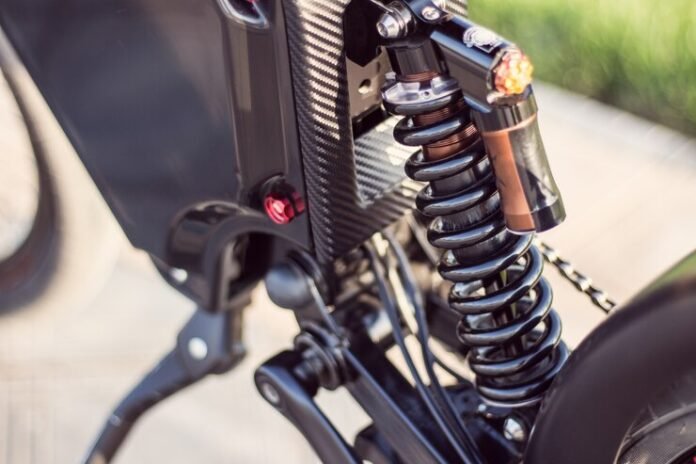The 2012 arctic cat f800 belt removal is a high-performance snowmobile known for its power and agility. A critical component of its drivetrain is the drive belt, which connects the engine’s power to the track, enabling movement. Over time, the belt can wear out, fray, or even break, causing performance issues or leaving you stranded in deep snow. Regular maintenance, including inspecting and replacing the belt, ensures smooth operation and prevents costly repairs. If you notice signs of belt wear—such as slipping, inconsistent acceleration, or visible cracks—it’s time to replace it. This guide will walk you through the belt removal process, helping you efficiently change the belt and get back on the trails.
Signs That Your Drive Belt Needs Replacement
Before diving into the belt removal process, it’s important to recognize when a drive belt needs replacement. One of the most obvious signs is visible wear and tear, such as cracks, fraying, or missing chunks of rubber. If your belt looks damaged, it’s only a matter of time before it fails completely. Another common symptom is belt slipping, where you may feel a loss of power or inconsistent acceleration, especially under heavy throttle. Additionally, if you notice a burnt rubber smell coming from the clutch area, the belt may be overheating due to excessive friction. Performance issues, such as jerky throttle response or difficulty reaching top speed, can also indicate that the belt has lost its grip. Inspecting your belt regularly—especially before a long ride—can help prevent unexpected breakdowns.
Tools and Preparation for Belt Removal
Removing the drive belt on your 2012 Arctic Cat F800 doesn’t require specialized tools, but having the right equipment makes the process smoother. You will need a belt removal tool, which is typically included in the Arctic Cat tool kit stored under the snowmobile’s seat or hood. Additionally, a socket wrench or screwdriver may be required to remove panels for better access. Before starting, ensure the snowmobile is on a flat and stable surface, preferably inside a garage or a sheltered area to avoid losing small components in the snow. It’s also a good idea to let the engine cool down, as clutches can become extremely hot after riding. Keep a new belt on hand for replacement, along with a clean rag to wipe off any debris or belt residue from the clutches.
Step-by-Step Guide to Removing the Belt
-
Access the Drive Clutch and Belt Area
Begin by opening the side panel of your Arctic Cat F800 to access the primary and secondary clutches. This panel is usually secured with rubber straps or fasteners that can be easily undone by hand. Once removed, you will see the belt wrapped around both clutches. -
Loosen the Secondary Clutch
The secondary clutch (the larger clutch at the rear) is designed to open up, allowing you to remove the belt. Locate the belt removal bolt hole on the clutch—this is where you’ll insert the belt removal tool. Thread the tool into the hole and slowly tighten it. This action will push the clutch sheaves apart, creating enough slack to slip the belt off. -
Slide the Belt Off the Clutches
With the secondary clutch loosened, carefully pull the belt outward while rotating it slightly. It may take some effort to work the belt free, but avoid excessive force to prevent damaging the clutches. Once the belt is free from the secondary clutch, slip it off the primary clutch (the smaller front clutch) and remove it completely. -
Inspect the Clutches and Clean the Area
Before installing a new belt, take a moment to inspect the clutches for any signs of wear, dirt, or belt residue. Wipe down the clutch surfaces with a clean rag, and if necessary, use clutch cleaner to remove any belt dust or rubber buildup. Ensuring a clean clutch surface will help extend the life of the new belt and improve performance.
Installing a New Belt and Final Adjustments
Once the old belt is removed and the clutches are cleaned, it’s time to install the new one. Begin by 2012 arctic cat f800 belt removal around the primary clutch, ensuring that any directional arrows printed on the belt align with the correct rotation of the engine. Next, carefully slide the belt around the secondary clutch while keeping slight tension on it. If needed, use the belt removal tool again to create slack in the secondary clutch. Once the belt is fully seated, remove the tool and rotate the secondary clutch by hand to help the belt settle into position. Finally, reinstall the side panel and check for proper belt tension.
Testing and Break-In Period for the New Belt
After installing the new belt, start the Arctic Cat F800 and let it idle for a few minutes. Slowly rev the engine and check for smooth engagement without any jerking or slipping. Take the snowmobile for a short test ride, gradually increasing speed and avoiding full-throttle acceleration for the first 30 to 50 miles. This break-in period allows the belt to properly seat into the clutches, ensuring optimal performance and longevity. If you experience any issues—such as excessive vibration, noise, or belt slippage—double-check the installation and clutch alignment.
Conclusion
The drive belt is a crucial part of your 2012 Arctic Cat F800, and knowing how to properly remove and replace it can save you time and money. By recognizing the signs of belt wear, using the right tools, and following a step-by-step removal process, you can keep your snowmobile running at peak performance. Regularly inspecting the belt and maintaining clean clutches will also help extend the life of your new belt. Whether you’re hitting the trails or navigating deep powder, having a well-functioning belt ensures that your Arctic Cat F800 delivers the power and responsiveness you need for an unforgettable ride.


